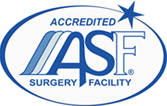Breast revision or secondary breast surgery is performed to correct unsatisfactory results, repair complications or improve upon the results of a previously performed breast procedure (breast augmentation, breast lift or mastopexy, or breast reduction).
There can be many reasons a woman might consider revisionary breast surgery. Even after proper planning and expert performance of a breast surgery, complications can occur or changes can occur over time, leading to the consideration of undergoing breast revision surgery. Common reasons might include:
- Capsular contracture (scar tightening around an implant, “hardening of the implant”)
- Implant deflation or leak
- Desire to change breast size
- Desire to change breast shape (natural changes or implant-related)
- Desire to change implant type (e.g., saline vs. silicone, round vs. tear-drop)
- Asymmetry
- Implant malposition or shifting of the implant
- Contour irregularity
- Drooping, sagging or laxity
- Irregularity of the nipple or areola
Your Personal Consultation
At the Zwiebel Center for Plastic Surgery, we understand that at woman’s decision to undergo breast revision surgery is highly personal and private. We will treat you in a respectful manner, and with utmost professionalism. We fully respect your privacy and will be very discreet during your confidential consultation with Dr. Zwiebel.
First, we will listen to your concerns related to the appearance of your breasts that you feel are important and would like to change. We want to understand your expectations and help determine if they can be realistically achieved. Your questions and concerns will be addressed and your information will be treated with complete confidentiality. Patients in the Centennial and Castle Rock areas can expect high quality patient care.
It will be very helpful in the evaluation and planning of your revision surgery if you are able to provide information about your previous surgery, including records and operative reports obtained from your prior surgeon.
Dr. Zwiebel will advise you if you are a good candidate for breast revision surgery and determine what techniques are best for your unique situation. Dr. Zwiebel will educate you about the procedure and what to expect during your recovery.
Breast Revision Procedures
Changes in Your Breast Tissue
All women can experience a change in their breasts with pregnancy, breast feeding, hormone changes and time. Fluctuations in body weight can cause changes in breast size and drooping. These changes can produce problems of excessive breast size, inadequate breast volume, laxity, drooping, and unsatisfactory shape. For women who have had breast implants, such changes over time can also have a significant effect on breast aesthetics.
During your personal consultation, Dr. Zwiebel will first listen to your concerns and questions, perform a careful evaluation, and thoroughly discuss alternatives based on your unique situation and desires. Surgical options may include breast reduction; breast lift (mastopexy); removing, repositioning or changing implants; or modifying the space around implants. Patients in the Centennial and Castle Rock areas can opt for any one of these procedures.
Breast Implant Deflation (Saline Implants)
Breast implants cannot be expected to last forever. If a saline-filled implant breaks, the deflation of the breast is obvious as the implant contents (salt water solution) are harmlessly absorbed by the body. Implant deflation can occur as a result of trauma or capsule contracture, but more commonly it seems to occur with no apparent cause. Surgery will be required to remove or replace the implant.
It is preferable to replace the implant within a week or two, before the implant pocket begins to scar down and contract. Treatment may be as simple as removing the deflated implant and replacing with the same size. This is an out-patient procedure, commonly done with just a local anesthetic through the existing breast implant scar. Recovery is quick, with immediate resumption of almost all normal activities. If you prefer to be asleep during the replacement, intravenous sedation can be used for your comfort in the safety of our fully-accredited sin-office surgical suite.
Because most breast implants come with a warranty from the manufacturer, the implant manufacturer may replace the implant and may contribute to the cost of the procedure fees.
If you choose to change your implant size, or if you have a capsular contracture, rippling or other issues, we can discuss the options to improve the aesthetics of your breasts. For example, if you have had drooping or lost volume after pregnancy, you may consider a breast lift to improve the firmness, shape and position of your breasts.
Breast Implant Leak (Silicone Implants)
It can be hard to know if your silicone implant has a leak, unless a mammogram, ultrasound or breast scan implant shows it is defective. We often discover a leak during surgery for capsule contracture around an implant that is older (more than 10 years old).
To be sure all the silicone leak is removed, surgery will usually require removal of the implant and the capsule (the lining the body creates around the implant). This procedure is an out-patient procedure, performed with intra-venous sedation: you will be completely asleep during the operation, but wake up quickly at the conclusion of the operation. We use long-acting local anesthetics and a special anesthetic pump, for your continued comfort, post-op.
As with saline implant replacement, manufacturer warranty may help with costs of a replacement operation. There are also many opportunities for improving breast aesthetics, if desired: not replacing the implants, changing implant size, breast lift or other procedure to improve shape and feel.
Increasing Breast Size
Replacing implants to increase breast size can be a relatively simple procedure, but may require increasing the size of the implant pocket, the space in which the breast implant is positioned. To help you make a good choice, Dr. Zwiebel will carefully measure your frame and assess your breast anatomy and tissue characteristics (Dimensional Planning) to determine what size and shape implants may fit your body without increasing potential risks of complications. If you are considering larger implants, it is very helpful to have the information about your current implants so that an intelligent decision can be made about the change you would like to make. This surgery can be relatively simple or require more tissue release (capsulotomy) to make room for the larger implants.
Decreasing Breast Size
If you desire to remove or replace your breast implants, Dr. Zwiebel will listen carefully to learn your desired outcome, perform a careful analysis of the dimensions and tissue characteristics of your breast and chest, to then be able to discuss options available to you. If you choose to decrease the size of your implants, it may not be as simple as placing a new implant. The capsule that surrounds the implant may need to be tightened with internal suturing (capsulorrhaphy) and the skin may need to be tightened or lifted.
Capsule Contracture (“Hardening of Implants”)
When breast implants feel too firm or hard, or appear unnatural, it is often a result of tightening or shrinking of the pocket around the implant. After breast implant surgery, the body naturally creates a smooth lining around the implant; this lining is called a capsule. Capsule contracture occurs if the capsule thickens and tightens around the implant. Causes of capsule contracture include infection, trauma or bleeding around the implant. Sometimes, there is no apparent cause of the capsule contracture. If it is severe, it can cause discomfort or changes in the breast’s appearance. In such cases, surgery may be desirable to modify or remove the scar tissue, or perhaps remove or replace the implant.
Surgical treatment can involve expanding the pocket (capsulotomy) or removing the entire capsule (capsulectomy). To help prevent the recurrence of the capsule contracture, options can involve positioning the new implant under the chest muscle (subpectoral), if the old implant was in front of the muscle (pre-pectoral/subglandular). The options are will dependent upon factors that are individualized to each person’s needs; Dr. Zwiebel will explain this to you at your consultation and make an individualized recommendation.
Implant Malposition
After breast augmentation, it is possible for one or both implants to drift or scar so that the implant does not sit in an ideal position for attractive breast aesthetics or symmetry. This can result from scar capsule contracture (discussed above) or as a result of a capsule that has stretched too far. The position of the implant can be corrected by modifying the capsule (capsuloplasty or capsulorrhaphy) with internal sutures or other more sophisticated techniques to adequately support the implant.
Symmastia (“Uni-Boob”)
Symmastia (connection or blending of the breasts) results from the breast implants touching across the middle of the chest, filling in the cleavage between the breasts. This occurs infrequently; women with a concave breast bone (pectus excavatum) are more susceptible to this problem, as are women who have implants too large for the size of their chest. Repair can be accomplished with internal suturing, often reinforced with an internal graft to prevent recurrence. Implant removal or exchange may be recommended if the original implants are too large for the chest.
Double-Bubble Deformity
The “double bubble” refers to the presence of a crease along the lower curvature of the breast above the breast fold. This can give the appearance that the breast is stacked on top of the implant, rather than a blended homogeneous contour of the breast and implant.
The causes include a short tight breast crease before augmentation or a tight pectoral muscle edge. Possible treatments can include release of the internal tight tissues, repositioning the implant, a breast lift procedure or use of a different shaped implant.
Implant Rippling or Visible Implant Edge
Rippling of the implant or an unnaturally abrupt defined edge of the breast can result from inadequate tissue coverage of the implant. This can occur in very slender women with too little breast tissue or fat to cover the implant, especially if the implant is placed in front of the muscle. This is a bit more likely to occur with saline-filled implants.
Treatment options may include repositioning the implant under the muscle, switching from saline- to newer silicone gel-filled implants, internal grafting (to add tissue thickness), or a different shape or size implant. During your personal consultation and thorough examination, Dr. Zwiebel will assess the factors contributing to your individual issues and discuss the options to provide you with the best outcome.
Internal Scaffold Reinforcement
The use of internal scaffold may be of great benefit for some breast revision procedures. Internal scaffolds are biologic (graft) or synthetic (suture) materials that can be placed within the breast to offer support for the breast and/or implant. These materials are called scaffolds because they are all replaced by the body with collagen over a period of approximately 2 years. This allows the body to add tissue thickness and strength where it is needed to cover or support a breast implant. The biologic materials include grafts fabricated from specially treated human, pig, or bovine tissue. Specially processed silk and certain suture materials are woven into a fabric creating other scaffold types.
There are advantages and disadvantages to each type of scaffold: no one material is best in all situations and we will choose the scaffold that best suits a specific patient for their specific benefit.
Other Post-Surgical Deformities
Because of Dr. Zwiebel’s reputation, experience and expertise, he is frequently consulted regarding deformities or unsatisfactory results from previous breast surgery. Patients often express their appreciation for his careful evaluation, thorough explanation and answering of their questions. Through the years, many women have expressed their gratitude for the results they have obtained from Dr. Zwiebel’s skillful breast revision surgery procedures.
Patients in the Denver and Centennial areas may come to us with questions about surgery. Call 303-470-3400 or contact us online using the form on this page. We look forward to meeting you.





